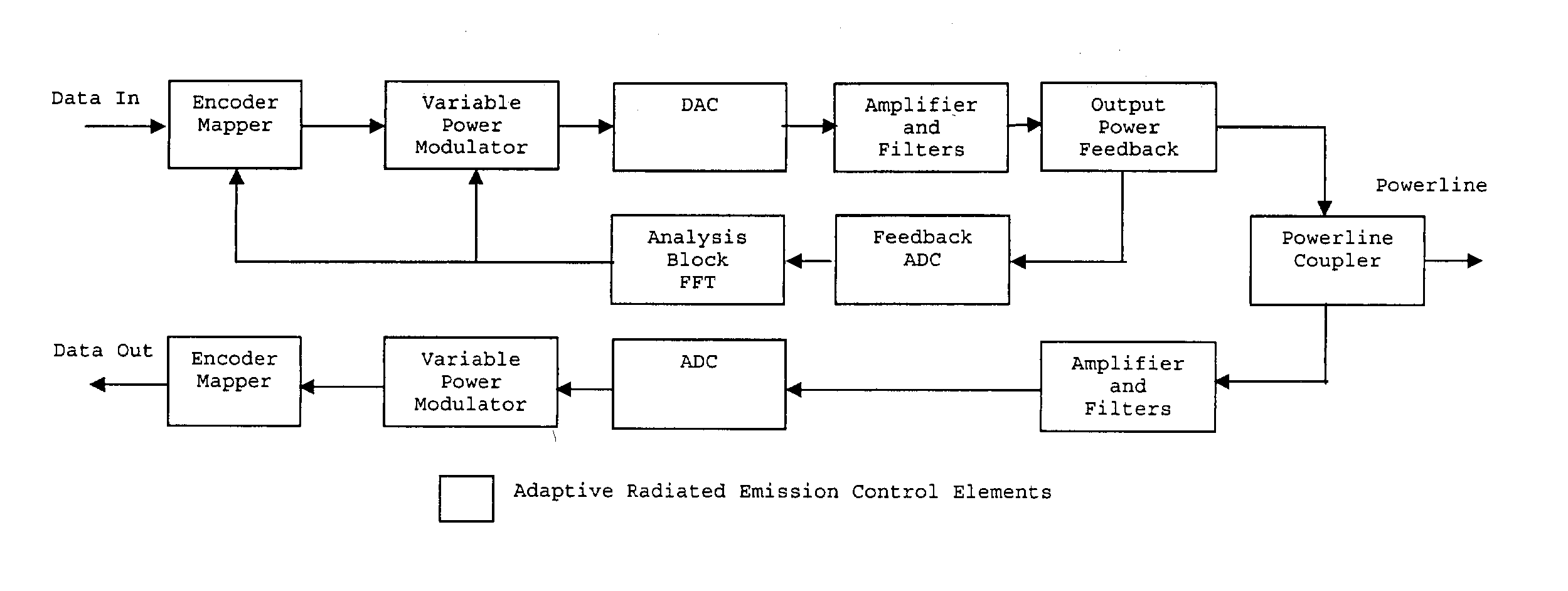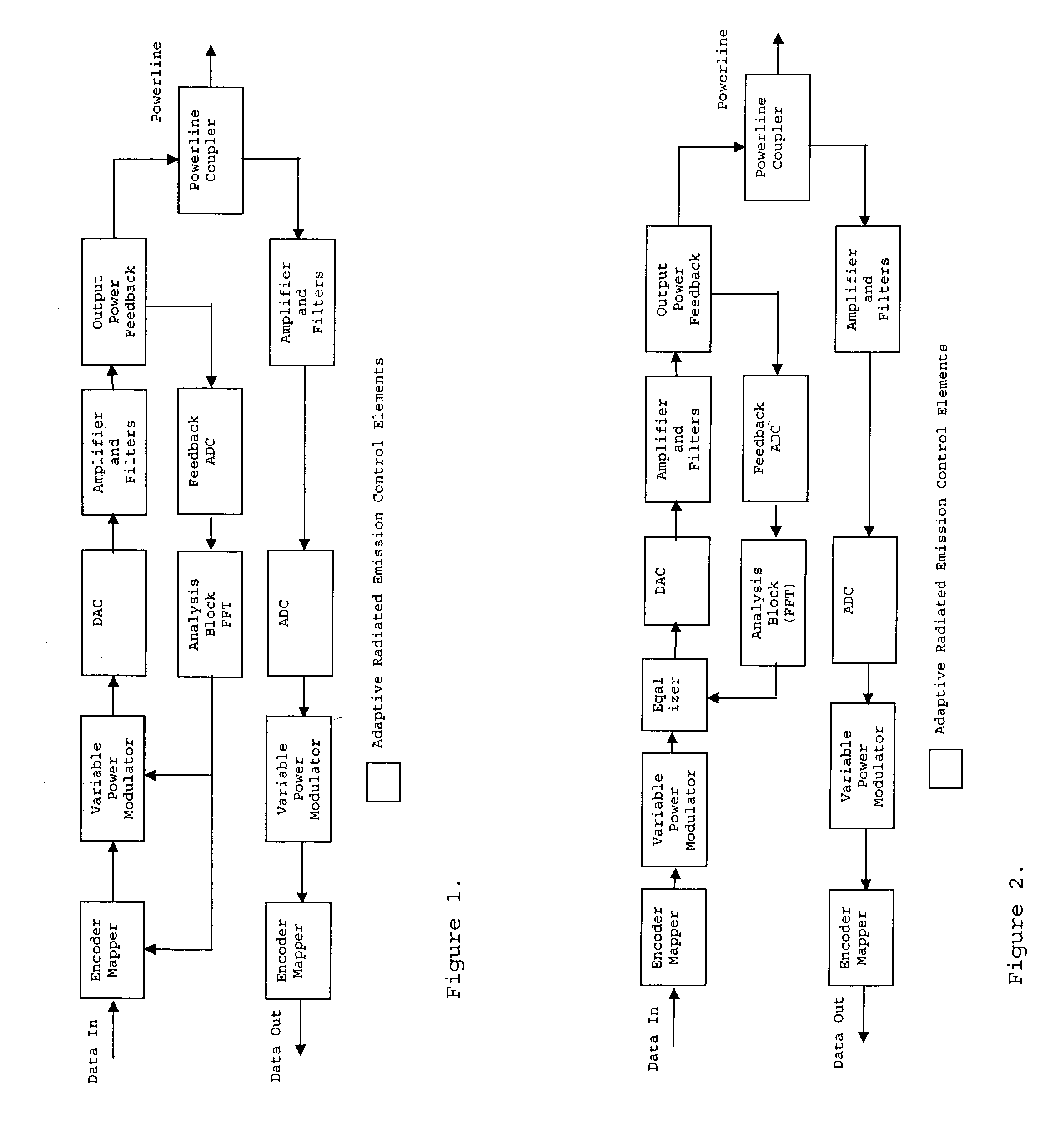Adaptive radiated emission control
a technology of radiated emission and control, applied in the direction of pulse manipulation, pulse technique, transmission/receiving by adding signal to wave, etc., can solve the problems of unintentional radiated emission from power line communication system, data transmission over power line, and inability to control radiated emission in the normal case of worse-case installations in office and home powerline networks, so as to limit radiated emission
- Summary
- Abstract
- Description
- Claims
- Application Information
AI Technical Summary
Benefits of technology
Problems solved by technology
Method used
Image
Examples
Embodiment Construction
[0021] FIG. 1 shows one embodiment for adaptive controlling of radiated emissions according to the invention which utilizes encoder, mapper, and a modulator with variable power features. For a multi-carrier and / or OFDM (Orthogonal Frequency Division Multiplexing) system, the modulator adjusts the power of each carrier based on the information provided by the feedback analysis block. The encoder and mapper block takes into account the information provided by the feedback analysis block for the purpose of constructing a carrier mask, carriers which could not be compensated in the modulator could be entirely removed from the transmit signal. The feedback analysis block processes the feedback data received as the result of operation of the feedback circuit. The feedback circuit measures power output of the transmitter, in the most simplistic way, it could be accomplished by the measurement across the source resistor connected to the output of the transmit amplifier in series with the po...
PUM
 Login to View More
Login to View More Abstract
Description
Claims
Application Information
 Login to View More
Login to View More - R&D
- Intellectual Property
- Life Sciences
- Materials
- Tech Scout
- Unparalleled Data Quality
- Higher Quality Content
- 60% Fewer Hallucinations
Browse by: Latest US Patents, China's latest patents, Technical Efficacy Thesaurus, Application Domain, Technology Topic, Popular Technical Reports.
© 2025 PatSnap. All rights reserved.Legal|Privacy policy|Modern Slavery Act Transparency Statement|Sitemap|About US| Contact US: help@patsnap.com


